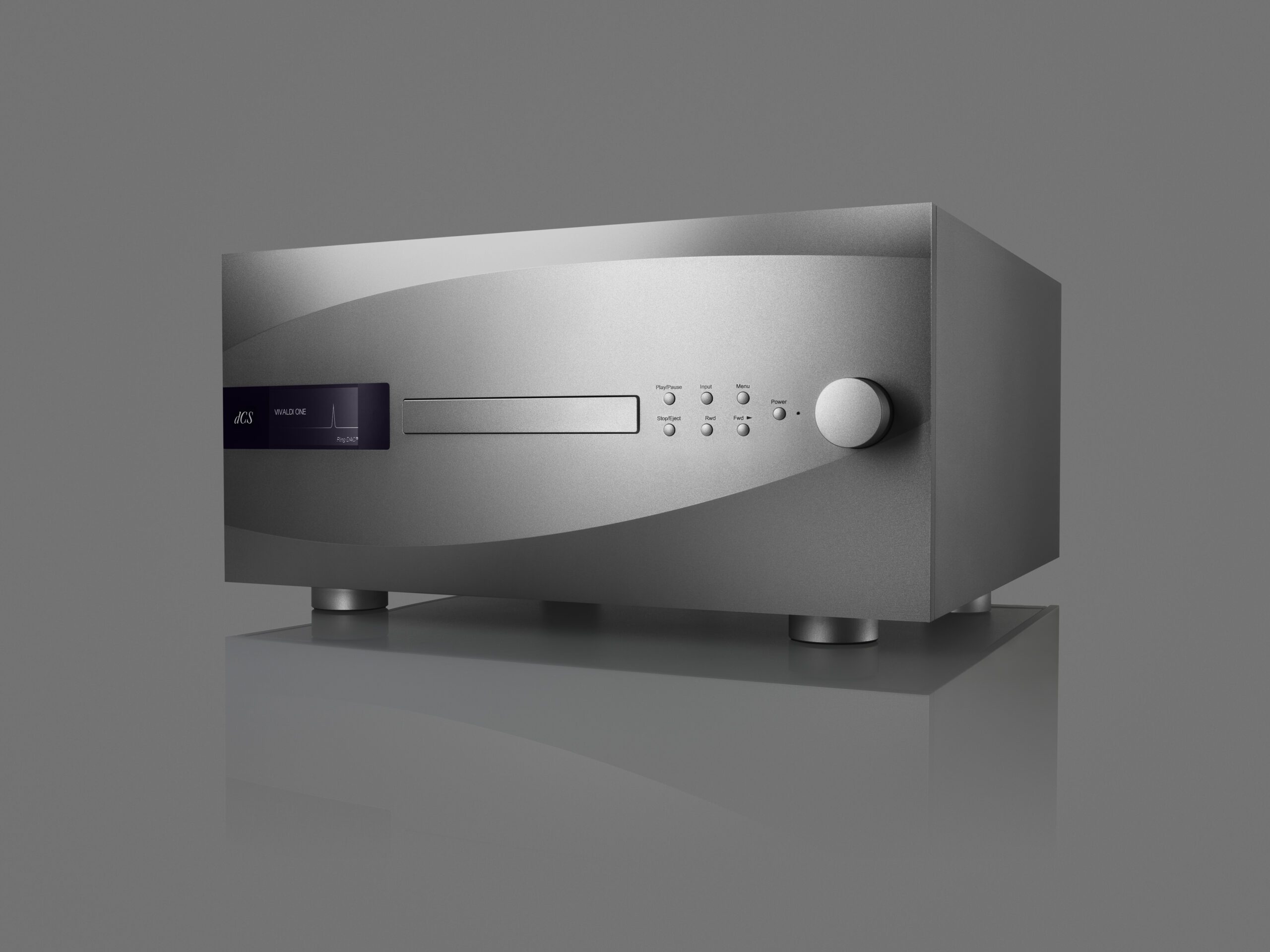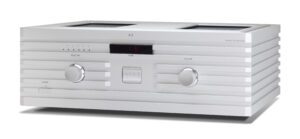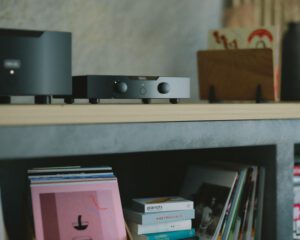
Rare though they may be, there are some audio systems that can take you somewhere else. They go to that place where you can look deep into the music and lose yourself. More importantly, they talk to you, and they ask questions of you. But the really special ones also add the indefinable to the experience. They invite you to consider your reactions to what you are hearing. Emotional connection through pure expression is not within the gift of all musicians, nor are they part of the capabilities of every system. Truly great equipment simply must do more than play the music. It needs to allow the performance to expand beyond the ordinary and into that area where the musicians, the music and the listener connect at an altogether different level.
Recently I reviewed the startling new APEX hardware upgrade from dCS. It features the latest thinking from the company’s digital engineers on the infamous Ring DAC plus a host of other improvements that have been synthesised into a single major board change. It can be retrofitted to several of the company’s products. From my early listening it became clear that this was going to be both very important for dCS and musically memorable for me. It’s hard to think of any upgrade I have heard through my years of audio that addressed the music in as focussed and profound way as the APEX does. In short, it’s a game-changer.
Going further
But it went further than that and made me question, not for the first time, what was the nature and true meaning of this upgrade. I was lucky enough to have a Vivaldi One as my messenger. This all-in-one hunk of dCS technology is a CD/SACD transport, DAC and network player in one box. As the name would suggest it is based on the Vivaldi system which, in its ultimate form, is dCS’s four-box statement piece.
My time with the Vivaldi One would include a few months before and after the hardware upgrade. That review tells you what an impact the APEX had on me but, as it sadly left the house I was pretty much consumed with the experiences of that machine and it lingered on in my mind. Nothing sounded quite the same. Then things looked up and I was offered the opportunity to review the Vivaldi One APEX, probably because I had driven the right people crazy by going on about it all the time.

While the Vivaldi One isn’t exactly the ultimate four-box Vivaldi system in a single chassis, that is certainly part of the concept behind it but, from what I am told, its design required some critically out-of-the-box thinking by their designers. Where the Vivaldi transport, DAC, Clock and Upsampler made up the system, the Vivaldi One would utilise the same Esoteric VMK3 VRDS-Neo CD/SACD transport which is a gloriously over the top sculptural piece of heavyweight mechanical/digital engineering. The Vivaldi One has multi-stage DXD upsampling with optional DSD/64 or DSD/128 plus multi-filters and DAC maps that give the machine extremely usable versatility and the user, many configurable options. This is all housed in a case with a beautifully sculptured fascia just 24mm taller and 15mm less deep than the Vivaldi transport. A word about that case too. The chassis is formed from an aerospace-grade aluminium and you won’t see any bolts or screws on its top or sides. This is pretty rare and it wasn’t until I saw one being disassembled for upgrade that I understood the lengths that dCS have gone to achieve this. It is a seldom mentioned aspect of the design ethos of the company.
Formidable!
As a stand-alone digital hub/Network player this proved to be a formidable machine. It supports all lossless codecs, including MQA and all major music management platforms plus Apple AirPlay, Tidal Connect and Spotify Connect. As a control app I like dCS Mosaic which is the company’s own platform. From within it you can access all multi filter settings, the output level and type of Upsampling and the three mapping algorithms. It is so much better to judge which combination of these you prefer and make those changes in real-time while sitting in a front row seat rather than next to the machine. The Mosaic platform also sounds very good and updates, which I imagine will continue to become available, are easily downloaded.
The original run of 250 units with some interesting finish options sold out almost immediately and I know the company were thinking about another run for a while, especially as their 35th anniversary was fast approaching. They were also inundated with enquiries from around the world asking them to build some more. Early in 2022 the decision was made and 50 more would be built. The rather sharp white, gold and unusual gloss black would unfortunately not be making a comeback though and the traditional finishes of anodised silver or black would carry the banner.
As someone who has had the pleasure of experiencing both the full-blown four-box Vivaldi system and the Vivaldi One (without and with APEX) it would be foolish to really compare them. The cable-hungry Vivaldi system is without peer in my experience. Building the box count from a transport/DAC before adding a clock and then the amazing separate up-sampler was an unforgettable experience and yet it’s easy to hear that, where the Vivaldi One APEX is concerned, those core values are still very much in play.
The Bill, please
Bill Evans You Must Believe In Spring has intrigued me for years. With the Vivaldi One in play I couldn’t tear my ear away from Bill’s playing. In a sparse piano, drum, bass threesome he lights the way chorally and melodically. This album is a virtual text-book of phrasing and musical expression. The APEX board opens the door very wide indeed and Bill’s right hand is so lyrical and so considered through his command of melody that he literally speaks, or sings through it. I’ve heard this album many times on vinyl and digitally but through this Vivaldi One APEX it was extraordinary and compelling. I’d say a lot of that is the extraordinary sense of timing and his phrasing and movement against an eerie quietness, which was magically intense.
Sticking with the piano theme I spent quite a bit of time in classical mode comparing different interpretations of the same pieces which of course with a top network streamer, is very straightforward and endlessly fascinating. Krystian Zimerman strikes me as being somewhat other-worldly in his abilities. His masterful command of Chopin is laid bare by the Vivaldi One APEX.

The Piano Concerto No 2 with the Polish Festival Orchestra is a particular favourite of mine and during the Larghetto he achieves the seemingly impossible. I know that he travels with his own Steinway and I imagine that the action of that great instrument is being constantly adjusted for him. But when you consider the mechanical route from fingertip energy on key to hammer against string, quite how he achieves both the speed and especially his delicacy of touch sounds improbable and seems to defy the laws of physics.
The Vivaldi One was like a great musical lens here and gave the most fantastic aural view of pure musical genius. Like some ethereal ice skater who seems to hover a few centimetres above the ice while executing tortuous turns and spins, Zimerman shows us an impossible lightness and delicacy of expression through mastery of note control and touch that is both astounding and very moving. I always loved this piece but the Vivaldi One APEX takes it to an entirely new level for me. It’s those tiny dynamic shifts again. When a truly great musician brings his technique to bear like this and you have a system capable of taking you to the epicentre of the action, then emotional involvement is an entirely natural consequence.
Playing the changes
For me, the smaller changes in playing pressures is the real test of a system’s dynamics rather than the big zero to 60 swings. This is one of the Vivaldi One APEX’s true strengths and the main reason why I love listening through it. Yes, it’s easy to hear how overtly dynamic and sharply detailed it is as the transients burst from the speakers. The APEX upgrade has also enhanced its colour palette and increased its musical strength, but I believe we can get used these things within a few months.
I much prefer to look at the inner workings of the music because, for me, that’s where the real long-term satisfaction lies as I never tire of discovery. It’s precisely what keeps me coming back for more. How are the instruments being energised and what shape are the notes? These are big questions that the Vivaldi One APEX has the answers to. The special feeling of the way a musician interacts with their instrument, the way they speak through it and ultimately how that makes you feel. The interactions between time and space and if it’s a multitrack recording, how the producer has interpreted and shaped the music and knitted it all together. These unfolding discoveries outlast the initial wow factor in my world.
If you are interested in the nuts ’n’ bolts of the ways that great writing and musicianship manifests itself then this is the machine for you. Having said that, I don’t discount the Vivaldi One’s more obvious impact so when you put these qualities together with the exuberant dynamics and the tremendous focus and rhythmic drive then you are in for something of a thrill ride when the occasion demands it. The Vivaldi One APEX is incredibly focussed, compact, tight and very, very punchy when it needs to be.
This speed, response and enhanced colour, without electronic emphasis, carries into everything you ask of the dCS Vivaldi One APEX. Scrolling through some old favourites and stumbling across a blast from the past in George Duke’s Brazilian Fantasy showed me that the transient intensity I remembered from the multi-layered percussion was far better than I had expected as the Vivaldi One calmly dissected it, but in a good way. This is a very decent, if not stellar multitrack studio recording, now minus the compression and rather breathless pace. All trace of hardness had gone and there wasn’t the slightest hint that the pace and attack of the various drums might become confused as the polyrhythms of Brazilian percussion exploded in full glory. There was no confusion and no flattening of perspectives. In fact there was a joyous freshness to the sound which has been a constant joy through recent dCS equipment and it was also a further reminder of just how dynamic these older recordings are. I’ve heard people describe the tonal balance of the Vivaldi One as bright. I’m not convinced. While it certainly and thankfully isn’t warm I would say that it preserves those high frequency elements of instruments that so many digital systems simply don’t. Plus there is always the accompanying equipment and its tonal contribution to consider. But, bright? I don’t think so. I think there used to be an expectation that good digital audio meant ‘bright’ and ‘forward’ but dCS is one of the handful of high-end digital brands that is leading us out of that digital cul-de-sac.
Part of the story
The dCS Vivaldi One APEX will no doubt become an iconic part of the dCS story as the years pass. It can imprint its musical ways into the psyche of anyone who is lucky enough to get hold of one. It is unquestionably a technical masterpiece. Build quality, functionality, user-configuration, you name it. But, it’s really the musical rewards that it delivers which make it stand out from any other single box device I have heard in the digital world and is second only to the full-blown Vivaldi system itself.
Getting all those components into one-box couldn’t have been easy but this is a machine that was conceived and built to serve the music and not the other way round. This it does, ensuring that every listening session is memorable and can bring new discoveries and revelations. We all need music in our lives, perhaps now more than ever in a volatile world and the relatively few of us who get to own this wonderful machine should consider themselves very fortunate.
Editor’s note: this review is one of the last written by Chris Thomas before his tragic and sudden death earlier this year. We will be publishing his final reviews in the next few weeks.
Technical specifications
- Type Single box Upsampling CD/SACD / Network player
- Digital Inputs AES 1 and 2 (Balanced), S/PDIF, USB 1 and 2
- Inputs Word Clock/in and out
- Analogue Out 1 pair x RCA, 1 pair x Balanced (fixed and variable levels)
- Conversions User selectable upsampling to DXD,
DSD 64 or 128 - Control Downloadable dCS Mosaic app
- Software Updates Via Mosaic app
- Remote Control dCS Universal IR remote
- Dimensions 220 × 444 × 420mm (H×W×D)
- Weight 27.4 kg (60.4 lbs)
- Finishes available Anodised silver or black
- Price £76,000
Manufacturer
dCS
Distributor
Absolute Sounds
+44(0)208 971 3909
By Chris Thomas
More articles from this authorRead Next From Review
See all
PrimaLuna EVO 100 phono preamplifier
- Apr 22, 2024

Reiki Audio SuperSwitch Master Pro + Servant Pro
- Mar 27, 2024

Melco Audio N1-S38 music server
- Mar 27, 2024











